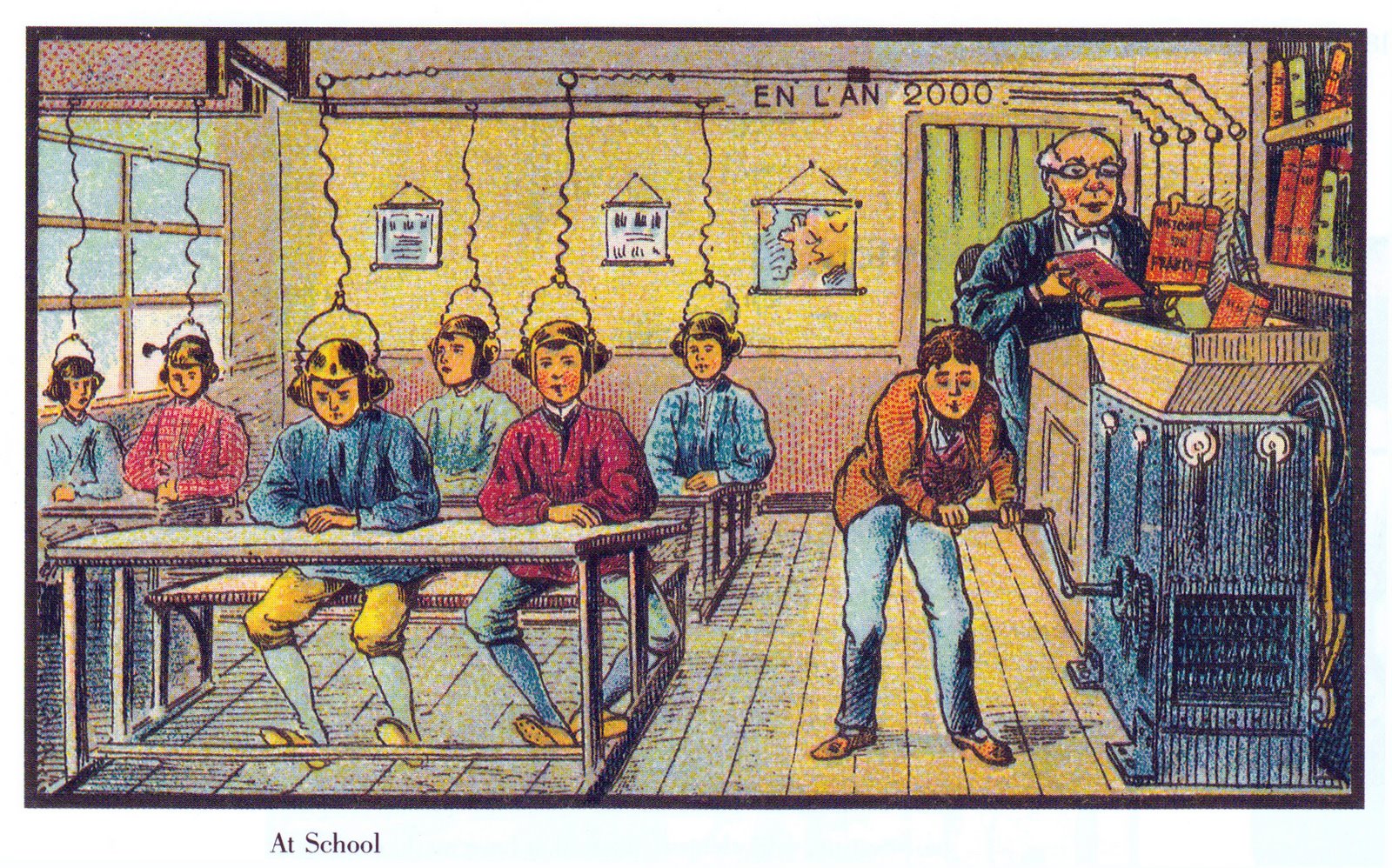Intent of the Educational Specifications
Design of the educational delivery model
History of School Design Back to Top
Historically, schools were designed as simply a container to deliver knowledge. The “one room school house” was just that—a single space in which all students were seated at individual desks, receiving direct instruction utilizing text books, recitation and memorization. As more students enrolled, the school expanded to identical rooms lined up along hallways. Vocational classes were structured around gender and vocation stereotypes. It was a factory model for education, delivering the same content for all students who were then assessed by the same means and metrics. Individualized or differentiated learning did not exist as students were receivers of information without necessarily being active participants in the learning process.

In the factory model, all students were delivered the same content, regardless of interests and aptitude.

In the factory model, all students were assessed using the same metrics and the same test.

Future-Ready School Design Back to Top
More than a century later, neuroscience has proven students learn best when actively engaged in the process of learning. Simply memorizing facts is not sufficient to be successful in a global economy. Technology has fundamentally changed how and where we access knowledge, allowing us to learn any place at any time with any device. As such, the importance of intentionally designing the educational delivery model is essential. Therefore, in order for students to be ready for the rapidly changing world around them, we must approach education—and school design—differently.
School design must:
- Respond to these important changes.
- Provide the least restrictive environment for all learners to thrive and reach their full potential.
- Provide learning environments that are flexible and agile to support various modes of learning.
The basic role of school facility Design is to create an environment that is accommodating, safe, and inclusive for both students and staff to excel. The role of school Architecture is to inspire learning by transcending basic fundamental design to create learning environments that are sensory rich while balancing stimuli. Color, materials, forms, lighting, and displaying student work are all aspects that enrich the learning experience. The school building must also be viewed as influencing teaching and learning. Outdoor space is a natural extension of the learning environment. Architecture can and does enhance learning and inspire students.
Flexible and Agile
Flexibility and agility are vital to creating learning environments for today’s students and teachers. Spaces must be flexible to allow for a variety of functions, and they must be equipped with furnishings that allow agile reconfiguration to support those functions. Flexibility does not mean creating wide open, generic space, but rather space with educational purpose.
“All Means All”
School design must support all modes of learning, from direct instruction to team teaching, from self-directed to project-based learning, from individual to collaborative group work, from teacher-centered to student-centered—all over the course of a single day. Design of learning space must be accommodating and inclusive, allowing students and teachers the agility to move back and forth between the various modes.
These are the goals of the Educational Specifications for the Ocean View School District of Orange County.
Read more about our vision for the Educational Specifications. →


